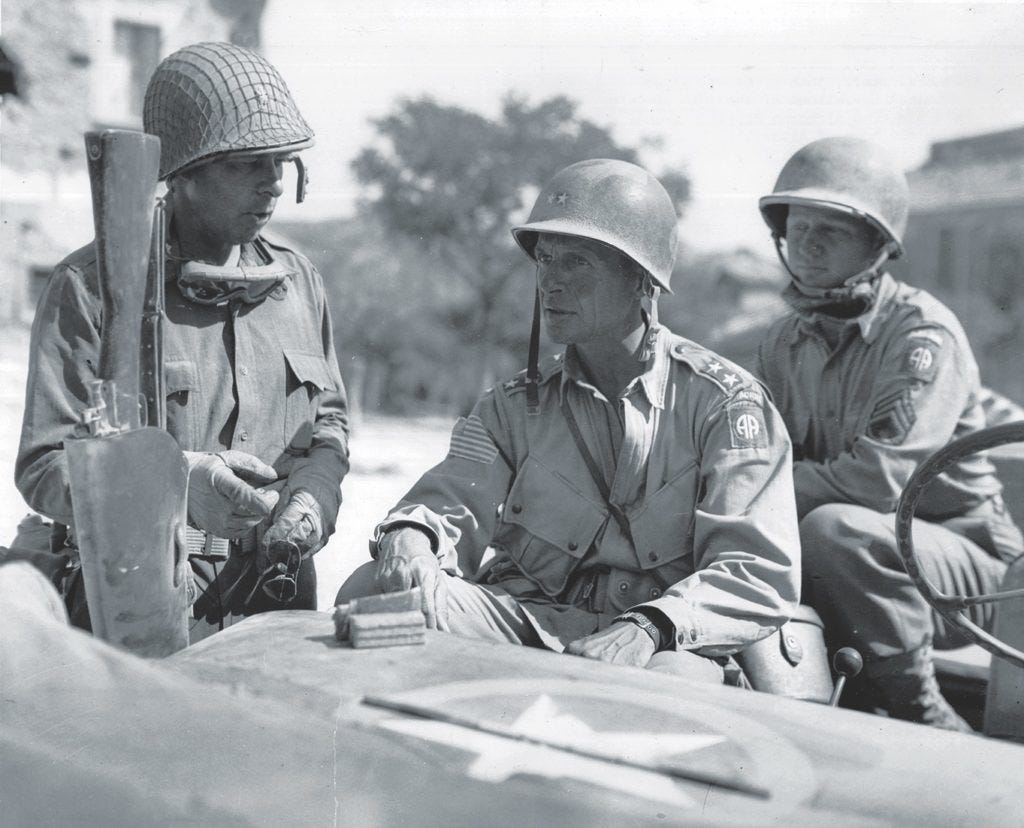Introducing: “A Series on Theory” where we dissect the episodes that shaped the minds of airborne warriors, and how they influenced the battles we know so well.

It was early December, 1944. The processes of reviewing the successes and failures of Operation Market Garden, the Allied airborne invasion of Holland, was well underway for the general officers of the airborne corps. In his report, Major General Matthew Ridgway expressed a cautious optimism on the future of the airborne.
He must have felt a certain sense of satisfaction, although he did not say it, in the performance of the American airborne divisions. Many of the lessons and ideas which he wrote of, and felt Market Garden had validated, were convictions forged and lessons learned by Ridgway a year earlier in the Mediterranean.
The thing that still gave him pause, however - the thing he needed to keep vigilant about - was one issue that required constant education of senior commanders: following the now-proven doctrine for the employment of his precious airborne divisions.
The measure of success of this operation must be appreciated under the pitiless light of cold-blooded analysis, lest these magnificent divisions be assigned a task wholly beyond their strength… I cannot too strongly urge the study, the mastery, and the application by all upon whom devolves any degree of responsibility for the employment of airborne forces.
— Major General Matthew Ridgway on Operation Market Garden, December 4, 1944
Influencing a Doctrine
Sicily & Tunisia—July to September 1943
For General Ridgway, the invasion of Sicily, codename Operation Husky, laid bare many problems for the 82nd Airborne Division, and airborne doctrine in general. Both Husky and the planning for the 82nd’s participation in the early Italian campaigns were watershed moments for the mind of Ridgway. They forged and galvanized Ridgway’s thinking on theories and doctrines for airborne warfare.
While a list of suitable missions for airborne forces had been codified, and later proved valid, a coherent doctrine covering the principles of actually employing airborne forces was notably absent.
The things Ridgway took away from Operation Husky’s aftermath were manifold:
it biased him against independent parachute battalions;
reinforced the imperative connection between aerial re-supply and sealift to determine the feasibility of an airborne operation;
that the division needed to fight unified - not piecemeal like it had in Sicily and up until now;
and;
coordination with the Navy was essential.
Perhaps his strongest conviction, however, left him holding a firm belief that dress rehearsals with the Air Corps, ideally for three weeks, needed to preceded any airborne operation. He described it in a memo as an “imperative necessity,” and said that “its violation invites mission failure, and possible disaster,” as they had proven with the 504th in Sicily. The folly in the planning of the ill-fated lift of the 504th PIR will be discussed in Battle Surgeons, so the point won’t be belabored here, but it was principally an issue of employment.
These concepts, Ridgway advocated for the in the most vigorous manner. He possessed a mind tailored more towards theory and doctrine, verses a mind like Gavin’s that offered piercing analysis of a dynamic battlespace. From July to October 1943, Ridgway wrote letter after letter, memo after memo to boards, four-star generals, and various headquarters from Algers to Washington with lessons learned and needed edits to the airborne doctrine.
Virtually all of these suggestions were implemented following the “Airborne Operations Board” chaired by Major General Joseph Swing, an old friend and associate of Ridgway. The goal of the board is most intriguingly described in Airborne Team:
In the calling of a conference by Maj. Gen. Ray E. Porter (War Department G-3)… He suspected that… the non-existence of a suitable tactical doctrine would “come to life.”1
The board produced War Department Training Circular 113, which codified almost all of Ridgway’s suggestions. This circular was held in force virtually through the end of the war. Upon TC 113’s publication in October 1943, General George Marshall, Chief of Staff of the Army, ordered that copies be distributed to all theater commanders.2
Through his many writings between July and October 1943, Ridgway clearly thought but never said that many of these woes in planning were due to a lack of education of operation commanders, many World War I-era veterans. He felt they did not understand what airborne units could and could not accomplish. (He found it no great surprise when one of the corps commanders planning initial Italian operations was shortly relieved of his command.)
Operation Market Garden, in Ridgway’s view, strengthened his conviction to the circular - which he had a great deal of input in what it spelled out - and he advocated for commanders, many of whom not airborne-qualified, to study it so they had an understanding of how to employ “these magnificent divisions.” This is really what he was getting at when he was constantly worried that they would be “assigned a task wholly beyond their strength…” Thus, he could not “too strongly urge the study, the mastery, and the application…” of airborne troops.
Huston, James. Airborne Team. War Department, Special Staff, n.d. P. 151
iBid.


Is TC 113 available online? I would like to read it.